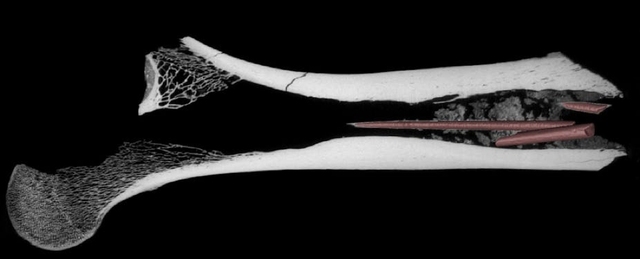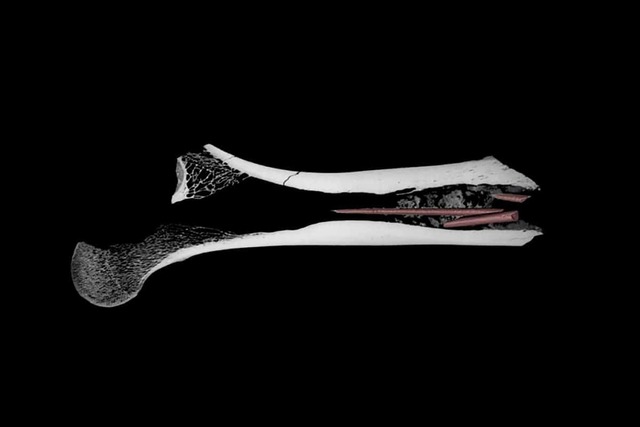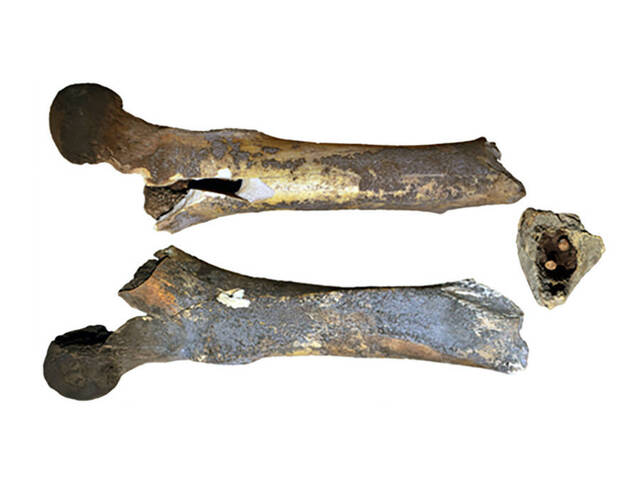For thousands of years, early humans relied on skill, intelligence, and innovation to survive in the wild. But a recent archaeological discovery in South Africa’s Kruger Cave has revealed an astonishing level of ancient scientific knowledge—a 7,000-year-old poisoned arrow. This remarkable find, the oldest known multi-component hunting poison, provides compelling evidence of early humans’ advanced understanding of chemistry, plant-based toxins, and hunting technology. But how did our ancestors create such a lethal formula, and what does this reveal about their way of life?
The Discovery: A Forgotten Artifact in a University Storeroom
In 1983, archaeologists excavating Kruger Cave in South Africa uncovered an antelope femur bone with three embedded bone arrowheads. The discovery was notable, but at the time, the bone was simply cataloged and stored at the University of the Witwatersrand’s Archaeology Department.
For nearly 40 years, this artifact remained untouched—until 2022, when a team of researchers re-examined the bone using modern scientific techniques. Their goal was to uncover any hidden organic material that might reveal new insights into prehistoric life. What they found was far beyond expectations.


Using micro-CT scans, researchers discovered that the marrow cavity was filled with an unusual sediment-like substance. Further chemical analysis confirmed what no one had previously imagined—the world’s oldest known multi-component hunting poison.
Video
Check out the video to discover the world’s oldest arrow poison, found in South Africa and dating back 7,000 years. It’s a groundbreaking archaeological find!
The Science Behind the Poison: A Deadly Formula

What made this discovery truly groundbreaking was not just the presence of poison, but the complexity of the formula used. Chemical analysis identified three toxic compounds, each derived from different plant sources:
- Digitoxin – A cardiac glycoside that disrupts heart function, leading to paralysis or death.
- Strophanthidin – A potent poison historically used in hunting, affecting the nervous system.
- Ricinoleic Acid – A breakdown product of ricin, one of the deadliest plant-based toxins.
The presence of multiple toxins from different plants suggested that ancient hunters deliberately mixed them together to create a more effective poison. This marks the earliest known instance of humans developing a sophisticated chemical formula for hunting.
What This Means: Advanced Knowledge of Chemistry in Prehistory
The ability to extract, process, and combine plant-based poisons suggests a deep understanding of pharmacologylong before modern science existed. This discovery challenges the traditional view that early humans lacked scientific knowledge and instead presents them as innovators and skilled chemists.

The First Chemists?
- The process of extracting toxins from plants requires a detailed understanding of which parts are poisonous and how to prepare them safely.
- This suggests that ancient humans experimented with plants over generations, gradually perfecting their poison recipes.
Trade and Long-Distance Knowledge Exchange
- Interestingly, the plants used in the poison did not naturally grow near Kruger Cave.
- This suggests early humans either traveled long distances to collect them or had an early form of trade network.
- If true, this would push back the origins of long-distance economic exchange in Africa.
The Evolution of Poisoned Weapons
The use of poisoned weapons was a major technological advancement in hunting. It allowed early humans to take down larger prey with minimal risk, reducing the need for close-range combat.
Why Use Poisoned Arrows?
- Before the development of bows and poisoned arrows, hunters had to physically overpower animals, a dangerous and energy-consuming process.
- With poison, a hunter could hit a target from a safe distance and let the toxin do the work.
Comparison with Other Ancient Poison Discoveries
- The earliest suspected poison use dates back 60,000–70,000 years, but chemical confirmation is still lacking.
- A 24,000-year-old wooden spatula from Border Cave (South Africa) had traces of ricin but was a single-component poison.
- A 13,000-year-old bone arrowhead found in Zanzibar might have had poison, but it wasn’t chemically tested.
- The 1,000-year-old Kruger Cave arrow contained some of the same poisons as the 7,000-year-old femur, showing continuity in poison use over millennia.
This means the Kruger Cave femur is the oldest confirmed multi-component poison ever found.

Implications for Archaeology and Future Research
This discovery has major implications for how we study early human knowledge and innovation. It suggests that prehistoric humans were not only skilled hunters but also expert chemists who understood how to manipulate nature for their survival.
New Methods in Archaeology
- The use of micro-CT scanning and advanced chemical analysis has changed how we study ancient artifacts.
- Similar techniques could reveal hidden organic materials in other archaeological finds.
Preserving Organic Artifacts
- Organic remains like poison residues usually degrade over time.
- This discovery highlights the importance of re-examining old artifacts with new technologies.
Expanding Knowledge of Early Trade and Knowledge Transfer
- The fact that the poison ingredients came from distant regions raises new questions about early human trade and migration.
- Future research could trace the origins of these plants and uncover the first networks of prehistoric exchange.
Conclusion: A New Perspective on Early Human Innovation
The 7,000-year-old poisoned arrowheads from Kruger Cave are not just a rare archaeological find—they rewrite our understanding of early human technology. This discovery proves that prehistoric humans possessed advanced knowledge of chemistry, pharmacology, and long-distance resource acquisition.
Far from being primitive, these ancient hunters were pioneers of scientific experimentation, blending multiple toxic plants into a lethal hunting formula. This remarkable finding is a testament to human ingenuity and the deep roots of scientific knowledge in Africa’s prehistory.
With ongoing research and new scientific methods, who knows what other secrets ancient artifacts might reveal?
Video
Watch the video to explore the mysterious discovery of giant skeletons found in a Wild West cave, featured in The UnXplained Season 4. The mystery will leave you stunned!



